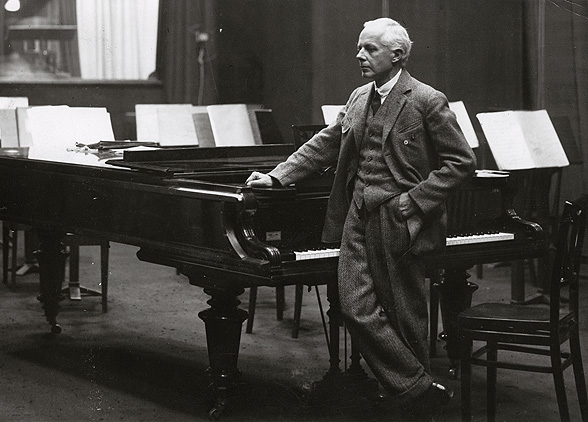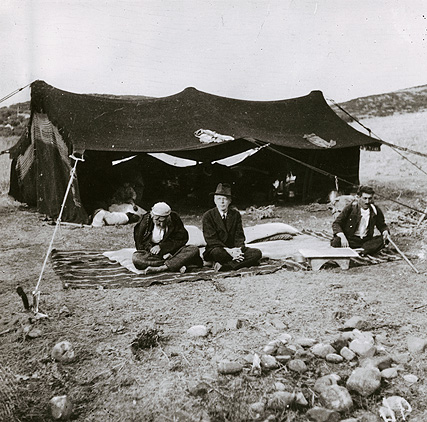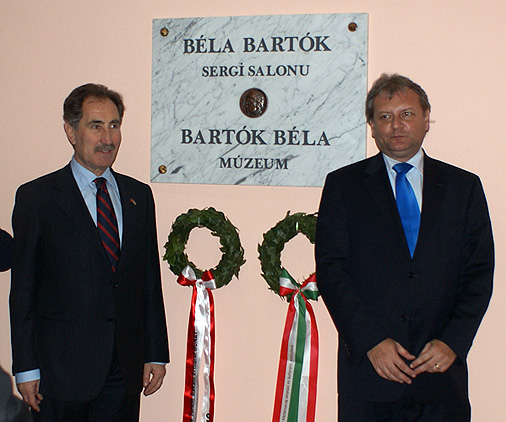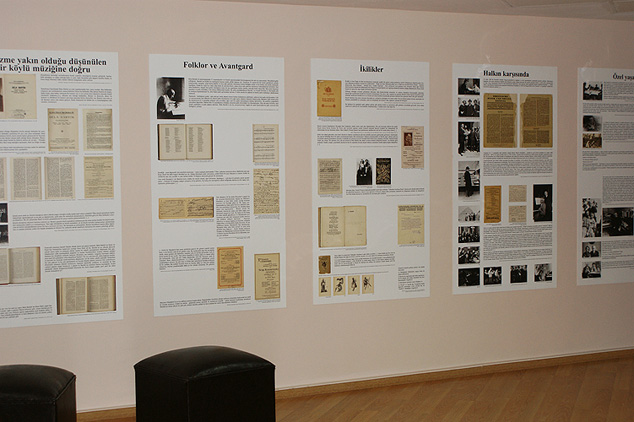Béla Bartók

-

Béla Bartók in Turkey, 1936
-

Béla Bartók Museum
-

Béla Bartók Museum
Béla Bartók Museum
(Osmaniye)

The exhibition
'Whoever met Bartók, thinking of the rhythmic strength of his work, was surprised by his slight, delicate figure. He had the outward appearance of a fine-nerved scholar. Possessed of fanatical will and pitiless severity, and propelled by an ardent spirit, he affected inaccessibility and was reservedly polite. His being breathed light and brightness; his eyes burned with a noble fire. In the flash of his searching glance no falseness nor obscurity could endure.' (thoughts of Paul Sacher about Béla Bartók)
Béla Bartók (1881-1945) was a composer, folk music researcher, pianist, professor of the Academy of Music of Budapest and a prominent figure of the musical life of the 20th century. His art and scientific work are of utmost importance from the point of view of both the history of Hungarian and European music and universal culture.
With this exhibition we recall the memory of Béla Bartók at a place where the collection of Turkish folk songs began in 1936 under his guidance. In this exhibition we have focused on Bartók as musicologist and folklorist since having established scientific musical folkloristics and comparative ethnomusicology, together with Zoltán Kodály, is regarded as his imperishable merit.
The centre of the exhibition space shows the events preceding and leading up to Bartók’s collecting trip to Anatolia, the trip itself and its results. Apart from the photos and copies of original documents, Bartók’s memory in Osmaniye is searched and presented by a film by Sezgin Türk and the recordings made here by Bartók himself. (The original phonograph cylinders documenting Bartók’s folk music collecting work are preserved in the Museum of Ethnography in Budapest: he recorded Romanian folk music on 614 cylinders, Hungarian folk music on 480, Slovakian folk music on 106, Turkish folk music on 65 and Ruthenian folk music on 39 cylinders.) Visitors are also offered the opportunity to listen to Bartók’s radio talk given in 1937 in the Hungarian Radio about his trip to Turkey.
In the 1930s the Turkish government developed the musical institutions of the country at an extremely rapid pace, very often with the help of foreigners (in this period one of the major organisers of musical life in Ankara was Paul Hindemith). The invitation sent to Bartók also fits in this trend. We have known the reasons for this invitation from a letter to Bartók of Turkologist László Rásonyi, professor of Hungarian language at Ankara University. In this letter he wrote that the Turks 'can expect more of musical relations with Hungary since in the field of classical music here, beyond the standard reaching that of Germans, you have a major extra positive factor, i.e. the fact that Hungarian folk music, modern Hungarian popular art music and the Hungarian soul might be closer to the Turks than German music, and with deeper understanding and intuition these can render the Turks a better service.' Bartók was delighted to go to Ankara to give concerts and lectures about the relationship of Eastern European folk music and popular art music, furthermore, he was deeply interested in Turkish folk music, of which, by his own standards, he had had very little knowledge before his collecting trip.
He prepared his collecting trip lasting from 16 to 29 November 1936 with the thoroughness so characteristic of him: in Budapest he studied the available literature on the subject, learnt Turkish, and in Istanbul he also listened to the whole disc collection of folk music, played by wandering musicians, of the conservatoire. During his trip he was accompanied by two professors of the Ankara Conservatoire as observers and by composer Ahmed Adnan Saygun, who helped him with everything, acted as his interpreter and took down folk song lyrics. During this very short time Bartók visited 14 towns and villages and recorded on phonograph cylinders songs sung by 30 performers, managing to overcome the fears of people often distrusting new and thus strange things, in this case, the ‘satanic’ voice recording device never seen before. He first published the results of his collecting trip in the literary journal called Nyugat (West): 'I have found a characteristic melody type... The structure of this melody type reveals a surprising similarity with the so-called descending structure of old Hungarian tunes... If we take into account the fact that tunes with such a structure are only known to be widespread among Hungarians, Romanians living around the Csangos in the Mezőség, Transylvania (Câmpia Transilvaniei) and Moldavia, the Mari (Cheremiss) and the northern Turks, these ever more certainly seem to be remains of an old, thousand-year-old Turkish style of music...'
The researches begun by Bartók have been continued since then, his work serves as a starting point for present-day researchers who, following in his footsteps, try to explore the relationship between Hungarian and Turkish folk music.
Apart from getting to know Bartók's folk music collecting work of international importance, visitors also get a picture of Bartók as a composer, they can listen to parts of his pieces, and carefully selected quotations and photos also show some episodes of the life of this great artist.
We hope to be able to bring visitors closer to this modest, reserved, polite and silent man who was always very shy with strangers, almost inaccessible, and although he taught his pupils conscientiously he considered teaching as a burden, something wearisome, because it took up his time that should have been spent on composition and scientific work. For the same reason he did not like to give concerts because while preparing for his concerts he practiced 4 or 5 hours a day in order to be able to give the best possible performance to his audience. He usually composed music during the night, and in the daytime he worked on his folk song collection, constantly learnt languages, read a lot and led a regular life: each day he went for a walk, he loved nature, collected butterflies and beetles, was an enthusiastic father and adored his mother. His love for his country was legendary but he did not despise other peoples and nations, and he always stood up firmly for his principles. Due to his anti-fascist convictions he refused to give concerts in Germany following the Nazi takeover, and he took pains to clearly distance himself from extremist political groups. After 1938 he resigned his membership of the Austrian Copyright Society and requested to be admitted to the one of London; from then on his pieces were published by Boosey and Hawkes. Following the outbreak of the Second World War and the death of his beloved mother he emigrated to the United States of America. Although he did not intend to spend all the remaining years of his life there, that is where he actually died. His mortal remains were brought back to Budapest in 1988.
This exhibition is naturally unable to give an overall, all-encompassing picture of Béla Bartók, nevertheless, we do hope to arouse visitors' interest in him and his works, and through them in Hungarian music and in Hungarian culture, history and Hungary in general. This has been the objective of Hungary's Embassy in Ankara that initiated the creation of the Museum, and this is the reason for which the Ministry of Foreign Affairs and the Ministry of Education and Culture of the Republic of Hungary commissioned the Bartók Archives of the Institute for Musicology of the Hungarian Academy of Sciences and the Hungarian National Museum to mount an exhibition displaying the life and activity of Béla Bartók. Our special thanks go to Osmaniye Province and the Municipality of Osmaniye for having placed at our disposal the imposing hall of the city's brand-new cultural palace for this purpose and for having spared no effort to support the creation of the exhibition.
Dr Klára Radnóti
